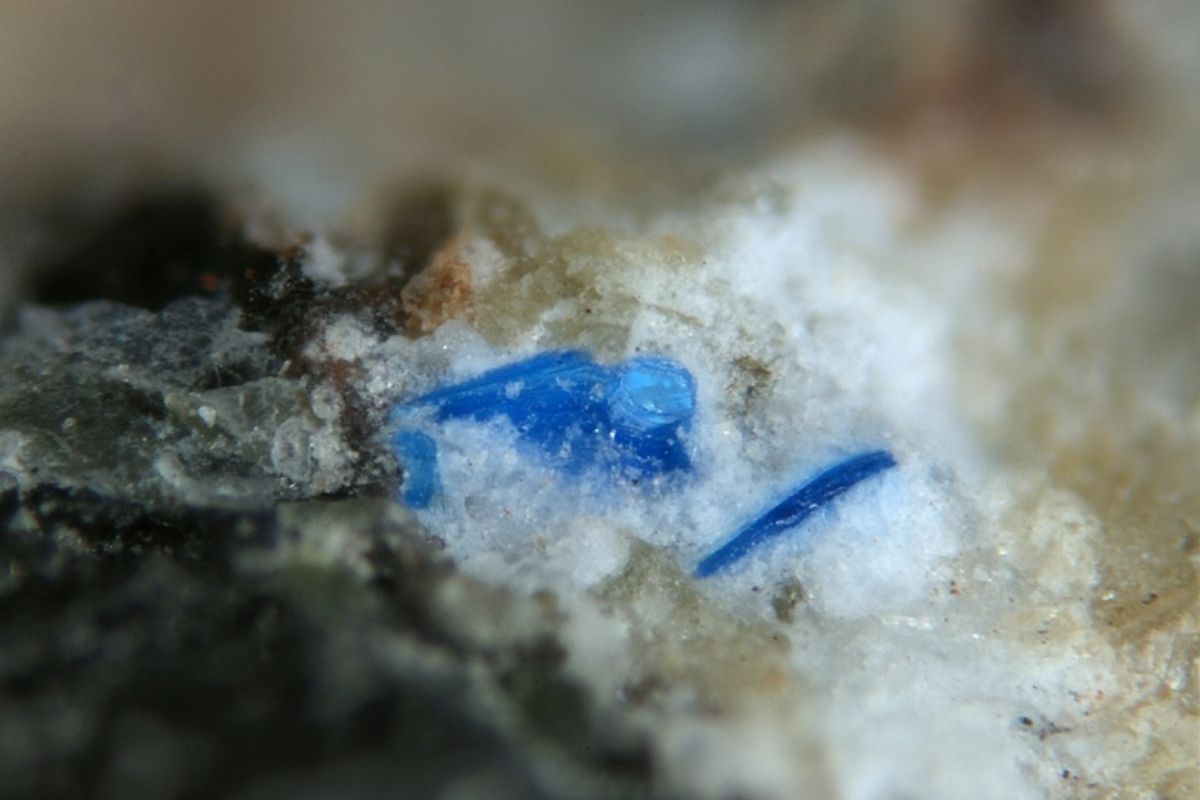
Calumetite is a rare mineral that fascinates both geologists and collectors. Found primarily in the copper mines of Michigan's Keweenaw Peninsula, this mineral boasts a striking blue color that captures attention. But what makes calumetite so special? Its unique composition and formation process set it apart from other minerals. Formed through the oxidation of copper sulfides, calumetite often appears alongside other copper minerals like cuprite and malachite. Its rarity means that specimens are highly sought after, making them valuable additions to any collection. Ready to learn more about this intriguing mineral? Here are 30 facts that will deepen your understanding of calumetite.
Key Takeaways:
- Calumetite is a rare and delicate mineral found in Michigan, USA, with a unique blue-green appearance. It's mainly used for collecting, studying oxidation processes, and educational purposes due to its rarity and sensitivity.
- To preserve calumetite, store it in a dark, dry place, handle with gloves, and keep in sealed containers. Regular checks and desiccants can help maintain its delicate nature and appearance.
What is Calumetite?
Calumetite is a rare mineral that has fascinated geologists and mineral enthusiasts alike. Its unique properties and limited occurrence make it a subject of interest. Here are some intriguing facts about this mineral.
-
Calumetite is a copper hydroxide mineral with the chemical formula Cu(OH)₂·CuCl₂·2H₂O.
-
It was first discovered in 1963 at the Calumet and Hecla mines in Michigan, USA.
-
The mineral is named after the Calumet mine where it was initially found.
-
Calumetite typically forms in the oxidation zones of copper deposits.
-
It often appears as blue to greenish-blue crusts or aggregates.
Physical Properties of Calumetite
Understanding the physical characteristics of calumetite can help in identifying and studying it. Here are some key physical properties.
-
Calumetite has a monoclinic crystal system, meaning its crystal structure is asymmetrical.
-
The mineral has a Mohs hardness of 2 to 3, making it relatively soft.
-
It exhibits a vitreous to silky luster, giving it a shiny appearance.
-
Calumetite is translucent, allowing light to pass through but not detailed images.
-
The mineral has a specific gravity of approximately 3.2, which is average for minerals.
Occurrence and Formation
Calumetite is not found everywhere. Its formation and occurrence are quite specific, making it a rare find.
-
This mineral is primarily found in the Keweenaw Peninsula of Michigan.
-
It forms in the oxidation zones of copper deposits, where copper minerals are exposed to oxygen and water.
-
Calumetite is often associated with other copper minerals like malachite and azurite.
-
The mineral can also be found in secondary mineral deposits, formed from the alteration of primary minerals.
-
It is usually discovered in old mine dumps and abandoned mining sites.
Uses and Significance
While calumetite may not have widespread industrial uses, it holds significant value in other areas.
-
Calumetite is primarily a collector's mineral due to its rarity and unique appearance.
-
It is studied by geologists to understand the oxidation processes in copper deposits.
-
The mineral can also be used in educational settings to teach about mineral formation and properties.
-
Calumetite samples are often displayed in museums and mineral exhibitions.
-
It has no significant commercial applications due to its rarity and softness.
Interesting Facts
Here are some lesser-known yet fascinating facts about calumetite that might surprise you.
-
Calumetite can sometimes be confused with other blue copper minerals like chrysocolla.
-
The mineral is sensitive to light and air, which can cause it to degrade over time.
-
It is often found in microcrystalline form, meaning its crystals are too small to be seen without magnification.
-
Calumetite can be used to trace the history of mining activities in the regions where it is found.
-
The mineral's name, derived from the Calumet mine, reflects the importance of the location in its discovery.
Preservation and Care
Due to its sensitivity, calumetite requires special care to maintain its appearance and integrity.
-
Calumetite should be stored in a dark, dry place to prevent degradation.
-
Handling the mineral with gloves can help avoid damage from oils and moisture on the skin.
-
It is best to keep calumetite samples in sealed containers to protect them from air exposure.
-
Regularly checking the condition of the mineral can help in early detection of any changes or damage.
-
Using desiccants in storage containers can help absorb moisture and prolong the mineral's life.
Final Thoughts on Calumetite
Calumetite, a rare copper mineral, fascinates both geologists and collectors. Found mainly in Michigan's copper mines, it boasts a striking blue color. This mineral forms in oxidized zones of copper deposits, often alongside other minerals like cuprite and malachite. Its unique properties make it valuable for scientific research and educational purposes.
Despite its beauty, calumetite remains relatively unknown outside specialized circles. Its rarity and specific formation conditions contribute to its mystique. Collectors treasure it for its vibrant hue and crystal structure, while scientists study it to understand more about copper oxidation processes.
If you ever come across calumetite, appreciate its rarity and the geological processes that created it. This mineral serves as a reminder of Earth's incredible natural diversity and the ongoing discoveries waiting beneath our feet. Keep exploring, and who knows what other hidden gems you might find?
Frequently Asked Questions
Was this page helpful?
Our commitment to delivering trustworthy and engaging content is at the heart of what we do. Each fact on our site is contributed by real users like you, bringing a wealth of diverse insights and information. To ensure the highest standards of accuracy and reliability, our dedicated editors meticulously review each submission. This process guarantees that the facts we share are not only fascinating but also credible. Trust in our commitment to quality and authenticity as you explore and learn with us.


